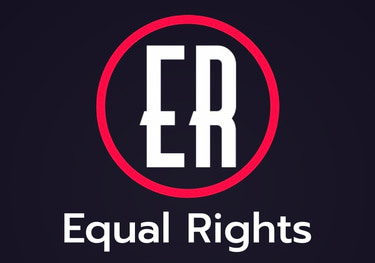The Role of Corporations in Promoting Climate Justice
Climate change is one of the most pressing issues of our time, with its impacts being felt disproportionately by marginalized and vulnerable communities.
Kylo B
6/15/2024
The Role of Corporations in Promoting Climate Justice
Climate change is one of the most pressing issues of our time, with its impacts being felt disproportionately by marginalized and vulnerable communities.
While governments and individuals play crucial roles in addressing climate change, corporations also have a significant responsibility.
This article analyzes how businesses can adopt practices that support climate justice and equal rights, highlighting examples of corporate responsibility.
Understanding Climate Justice
Definition and Principles
Climate justice is a framework that emphasizes the intersection of environmental sustainability and social equity. It acknowledges that the effects of climate change are not borne equally or fairly, with marginalized communities often facing the brunt of its impacts. Key principles of climate justice include:
Equity: Ensuring fair distribution of the benefits and burdens of climate actions.
Participation: Involving affected communities in decision-making processes.
Human Rights: Protecting and promoting human rights in climate policies and actions.
The Corporate Role in Climate Justice
Corporate Responsibility
Corporations, due to their significant environmental footprints and influence, have a critical role in advancing climate justice. Their responsibilities include:
Reducing Emissions: Minimizing greenhouse gas emissions through sustainable practices.
Ethical Supply Chains: Ensuring that supply chains are environmentally sustainable and socially responsible.
Community Engagement: Actively involving and supporting communities affected by corporate activities.
Strategies for Supporting Climate Justice
Corporations can adopt various strategies to promote climate justice, such as:
1. Sustainable Operations
Implementing sustainable practices in operations to reduce environmental impact:
Energy Efficiency: Investing in energy-efficient technologies and processes.
Renewable Energy: Transitioning to renewable energy sources, such as wind, solar, and hydropower.
Waste Reduction: Reducing waste through recycling, composting, and sustainable packaging.
2. Ethical Supply Chains
Ensuring supply chains are fair and environmentally sustainable:
Supplier Standards: Setting and enforcing standards for environmental and social responsibility among suppliers.
Fair Labor Practices: Ensuring fair wages, safe working conditions, and respect for workers’ rights.
Sustainable Sourcing: Prioritizing the sourcing of materials from sustainable and ethical sources.
3. Community Engagement and Support
Engaging with and supporting communities, particularly those disproportionately affected by climate change:
Community Investments: Investing in community projects that promote environmental sustainability and resilience.
Stakeholder Collaboration: Collaborating with local stakeholders, including NGOs, governments, and community groups.
Education and Advocacy: Supporting climate education and advocacy efforts within communities.
Case Studies of Corporate Responsibility
1. Patagonia
Patagonia, an outdoor clothing company, is renowned for its commitment to environmental sustainability and social responsibility:
Environmental Initiatives: Patagonia invests in renewable energy, sustainable materials, and waste reduction programs.
Advocacy: The company actively advocates for environmental protection and climate justice through campaigns and legal actions.
Fair Labor: Patagonia ensures fair labor practices in its supply chain and supports the well-being of its workers.
2. Unilever
Unilever, a global consumer goods company, has made significant strides in sustainability and social responsibility:
Sustainable Living Plan: Unilever’s Sustainable Living Plan aims to decouple growth from environmental impact while increasing positive social impact.
Inclusive Business Models: The company supports inclusive business models that empower marginalized communities, such as smallholder farmers.
Climate Action: Unilever is committed to achieving net-zero emissions across its value chain by 2039.
3. IKEA
IKEA, a multinational furniture retailer, integrates sustainability and climate justice into its business model:
Renewable Energy: IKEA invests heavily in renewable energy, aiming to be climate positive by 2030.
Sustainable Products: The company offers sustainable products, such as those made from recycled and renewable materials.
Community Support: IKEA supports various community projects focused on environmental sustainability and social equity.
Challenges and Opportunities
Challenges
While corporations have made progress, several challenges remain:
Greenwashing: Some companies engage in greenwashing, giving a false impression of environmental responsibility.
Short-Term Focus: The focus on short-term profits can hinder long-term sustainability goals.
Regulatory Compliance: Navigating complex regulatory environments and ensuring compliance can be challenging.
Opportunities
Despite these challenges, there are significant opportunities for corporations to lead in climate justice:
Innovation: Investing in sustainable technologies and innovations can drive both environmental and economic benefits.
Partnerships: Collaborating with governments, NGOs, and communities can enhance the effectiveness of climate justice initiatives.
Brand Value: Demonstrating a genuine commitment to climate justice can enhance brand reputation and customer loyalty.
Corporations play a crucial role in promoting climate justice and equal rights. By adopting sustainable practices, ensuring ethical supply chains, and engaging with communities, businesses can help mitigate the impacts of climate change on vulnerable populations. While challenges remain, the opportunities for positive impact are substantial. By prioritizing climate justice, corporations can contribute to a more equitable and sustainable future for all.
